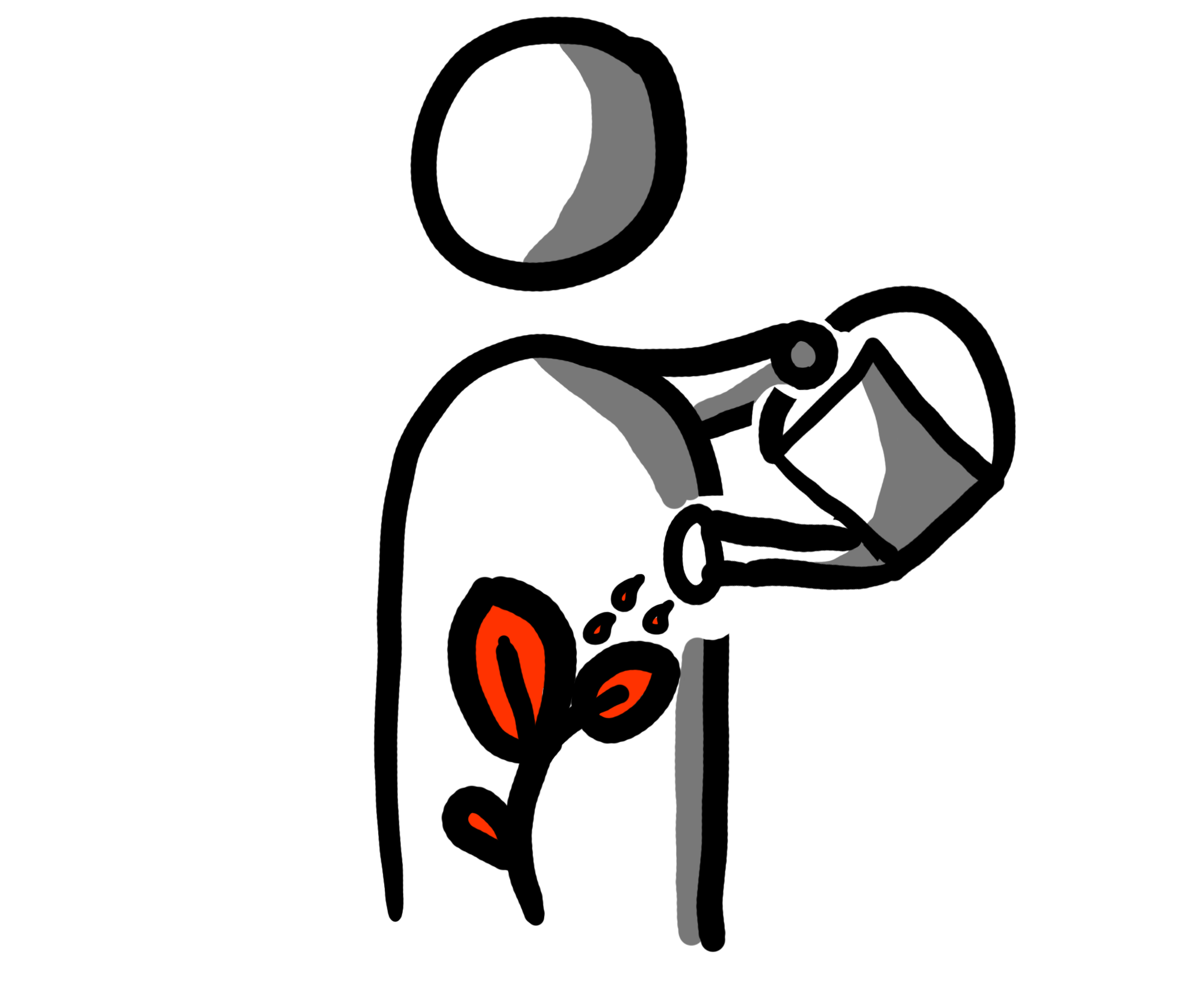 a framework for personal growth made approachable
a framework for personal growth made approachableOtto Scharmer achieved something truly remarkable with his Theory U: It comprehensively and consistently models a way for humans to transform.
Mastering transformation is a desirable skill: Understanding how to fundamentally change any aspect of oneself is helpful many ways. However, I find the go-to 'transformational language' and theory lacking to create sustainable change. What Otto Scharmer achieves in his (admittably dense) book is to provide an internally consistent framework that explains change and challenges not just for the individual, but also for larger groups of people.
Theory U Applied to Personal Development
I once had the opportunity to work at a personal development retreat based on Theory U. At this retreat, we introduced this framework to participants bit-by-bit because it is very 'bulky'. It requires all-new vocabulary and a leap of faith that learning the framework is worthwhile and research-based - as opposed to how my mom would describe it, "a tree-hugging philosophy."
To prepare for execution, I took the opportunity to design the conference's flipcharts & visuals. Some are adapted for this site for demonstration purposes.
Theory U Core Framework
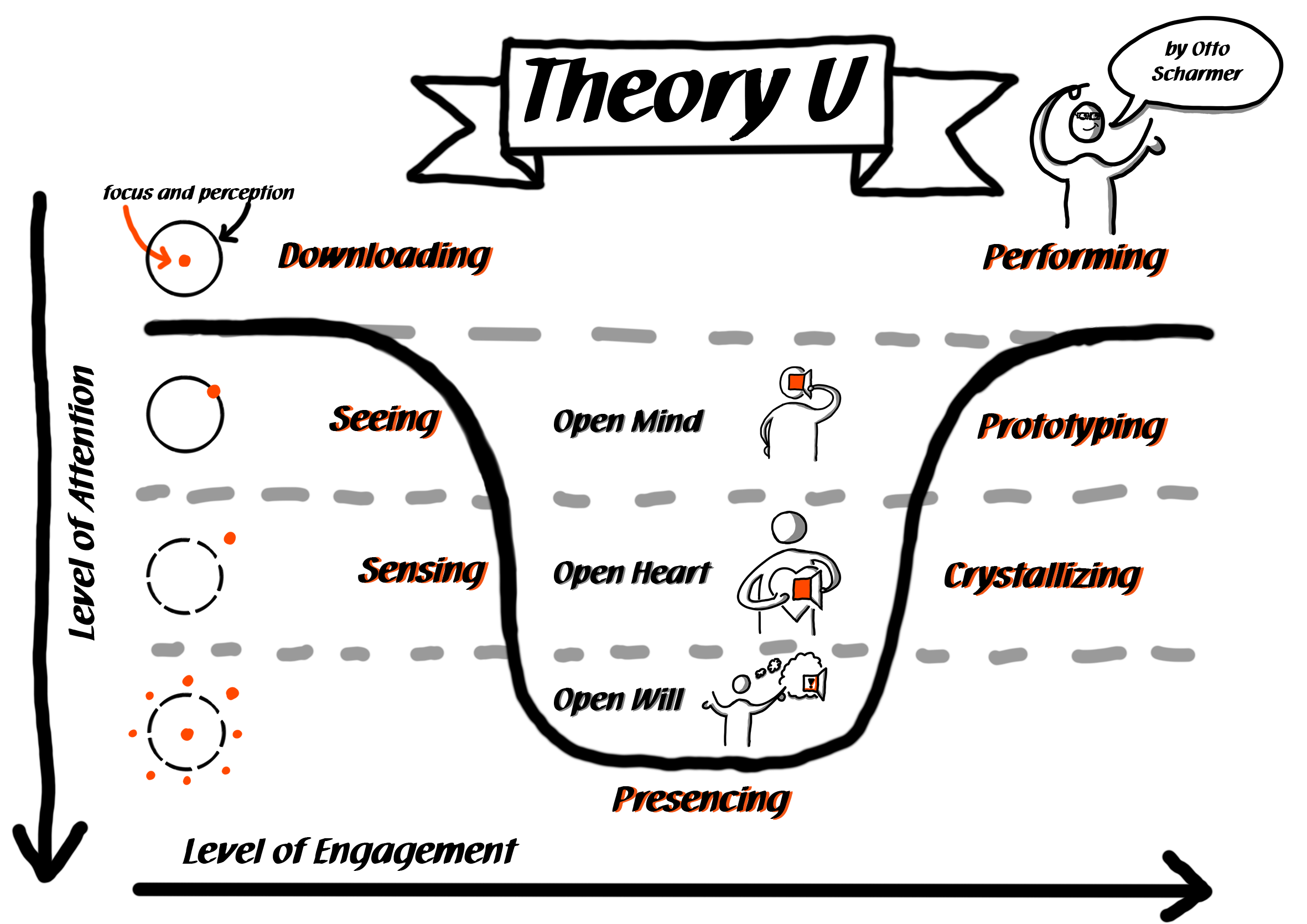
Theory U describes an 'ideal' change process covering several aspects of human cognition.
It requires a shift in attention that happens from one's individual 'reality' to a more holistic perception, allowing to synthesize complex - and often ambiguous - needs across many 'stakeholders'.
The Voices

Visual Language Examples
Differentiating the states of seeing, sensing, and presencing is not straightforward, especially for participants with little formal background on self-development or sociology. Therefore, creating simple, clear visuals is crucial to explaining these concepts sustainably:
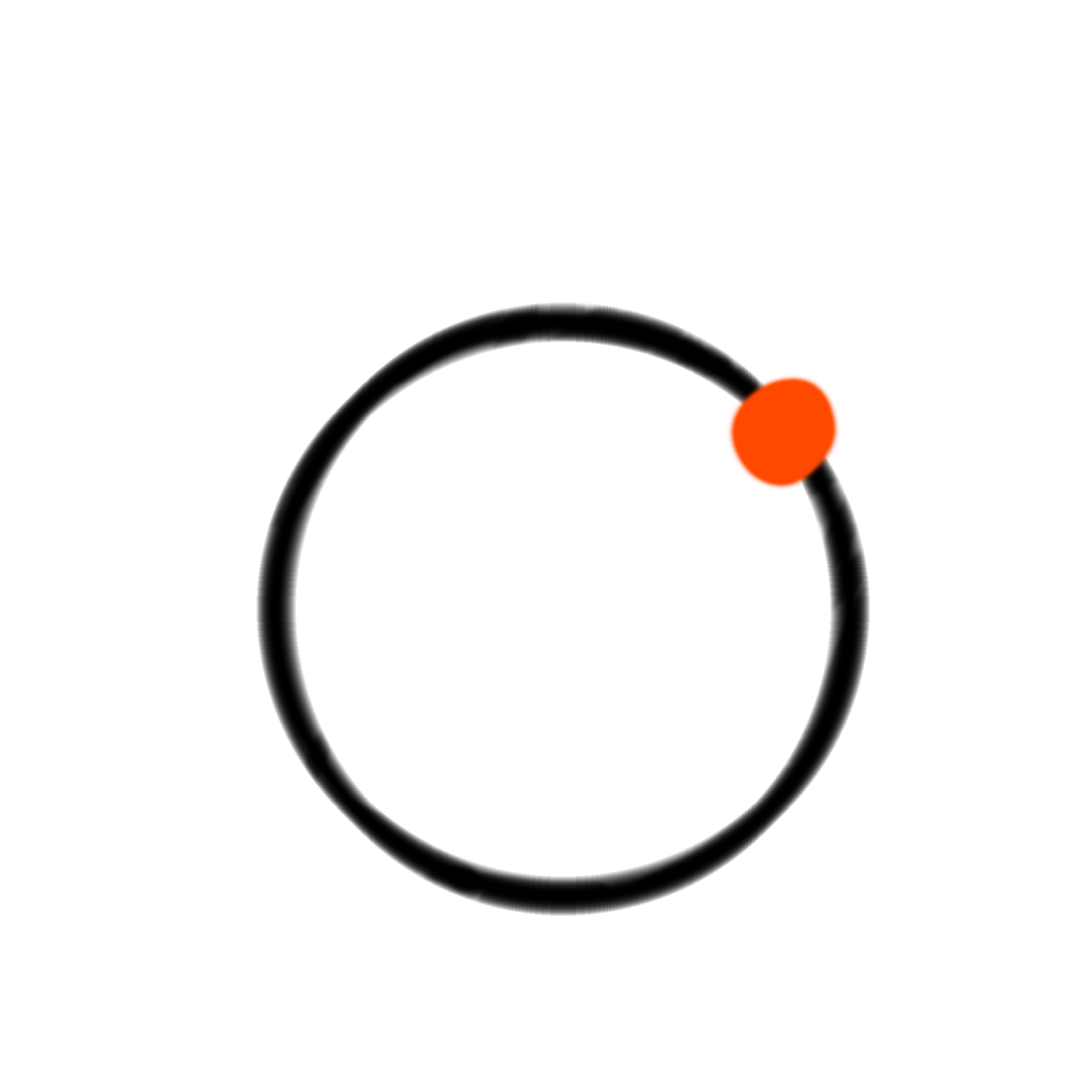

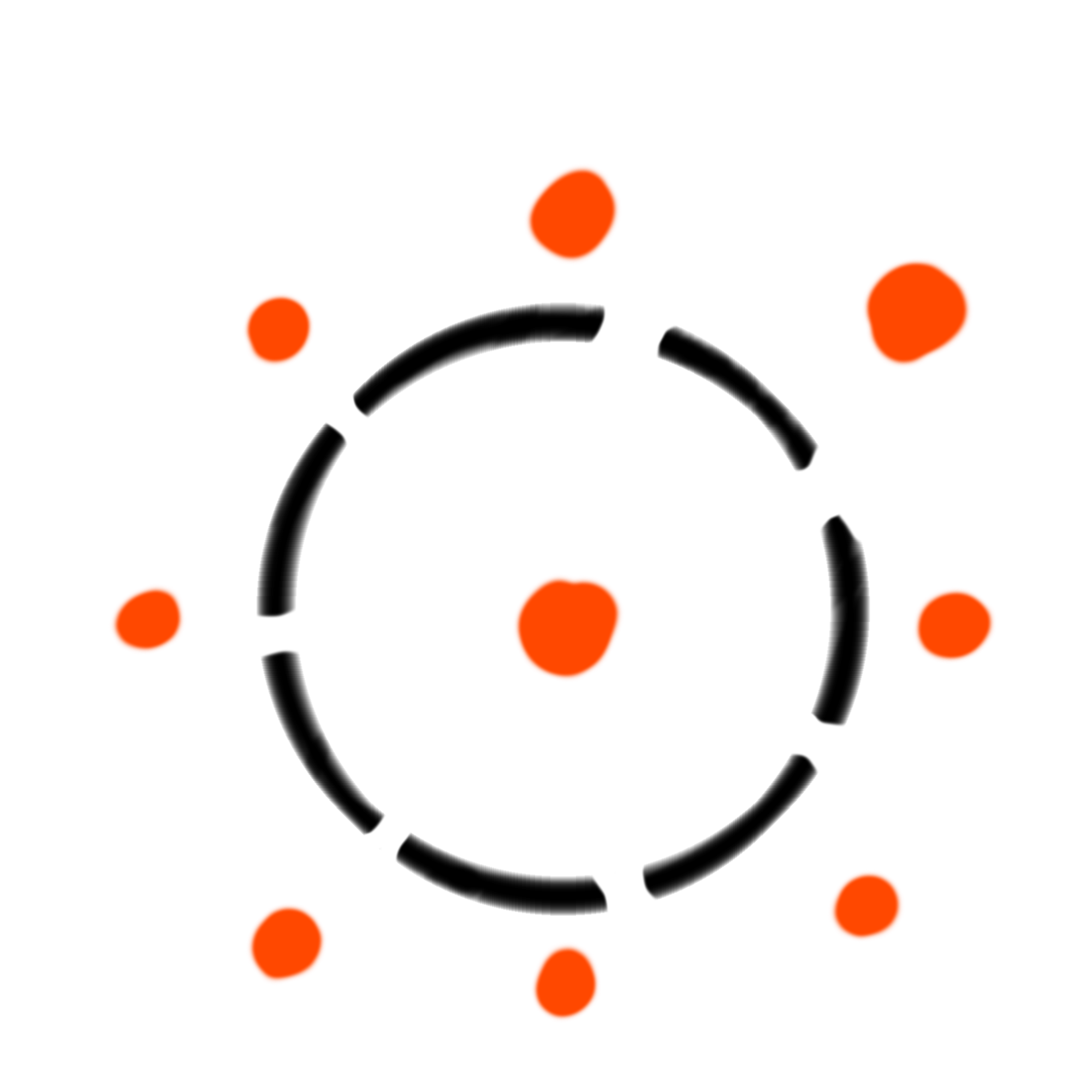
Visualizing the Levels of Attention of the model:
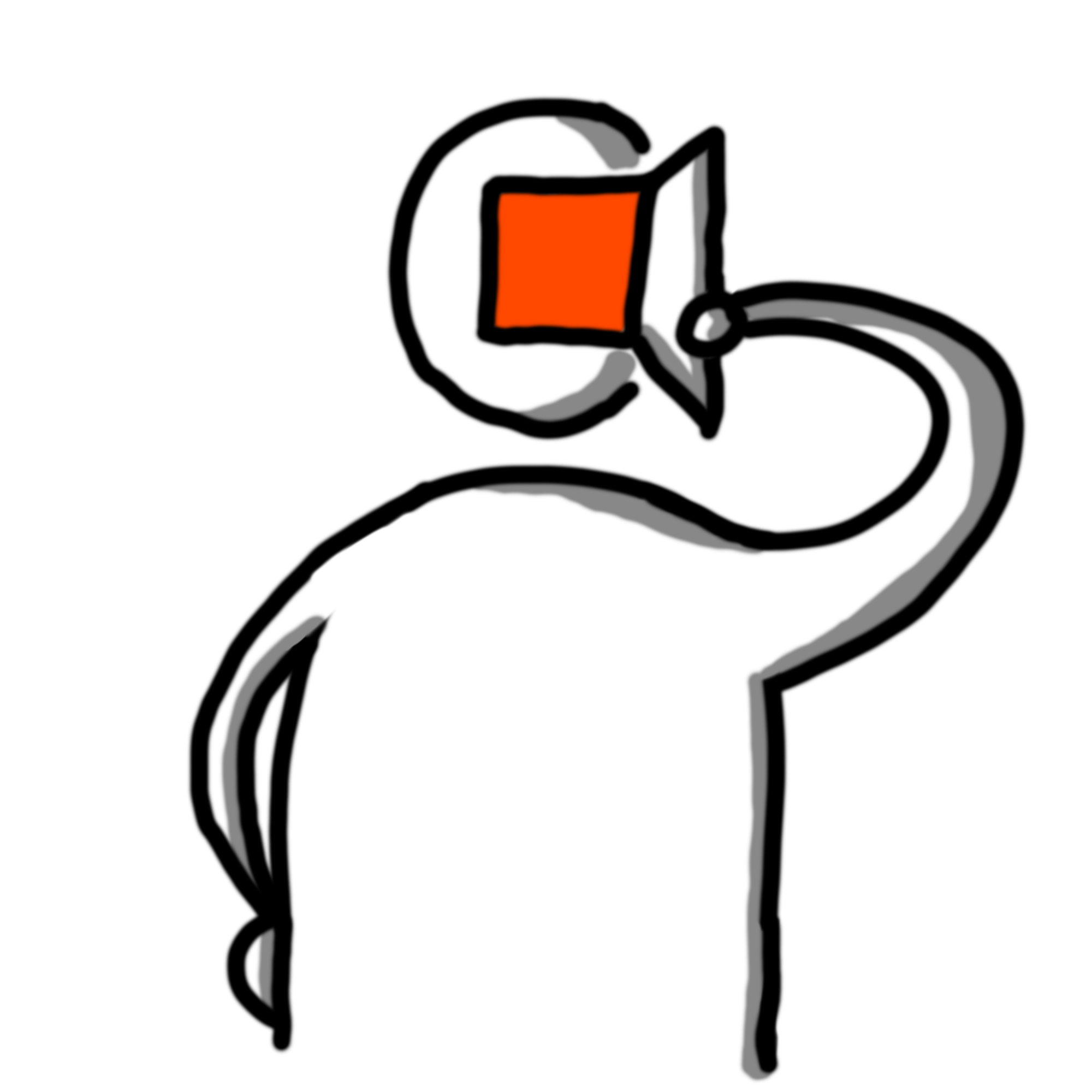
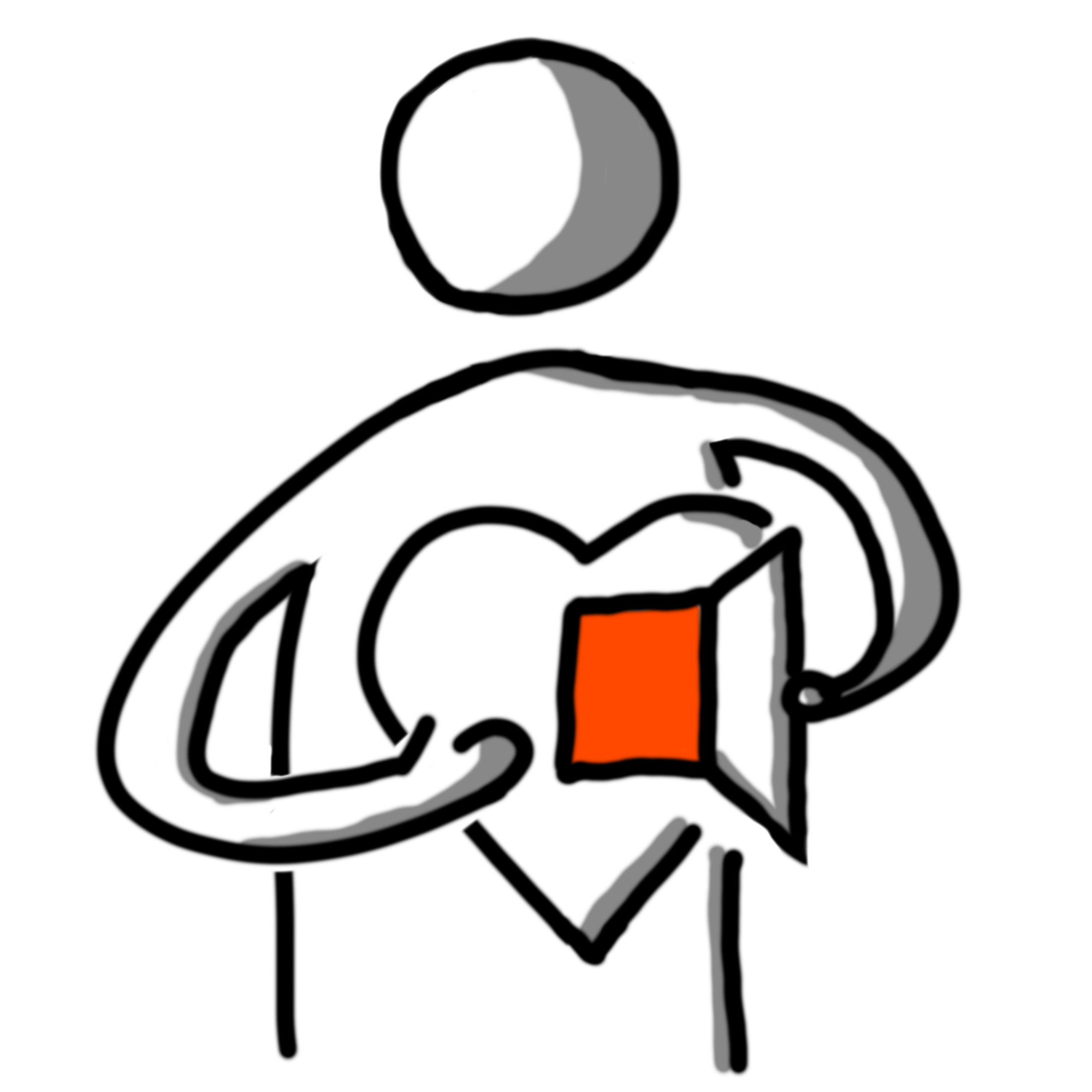
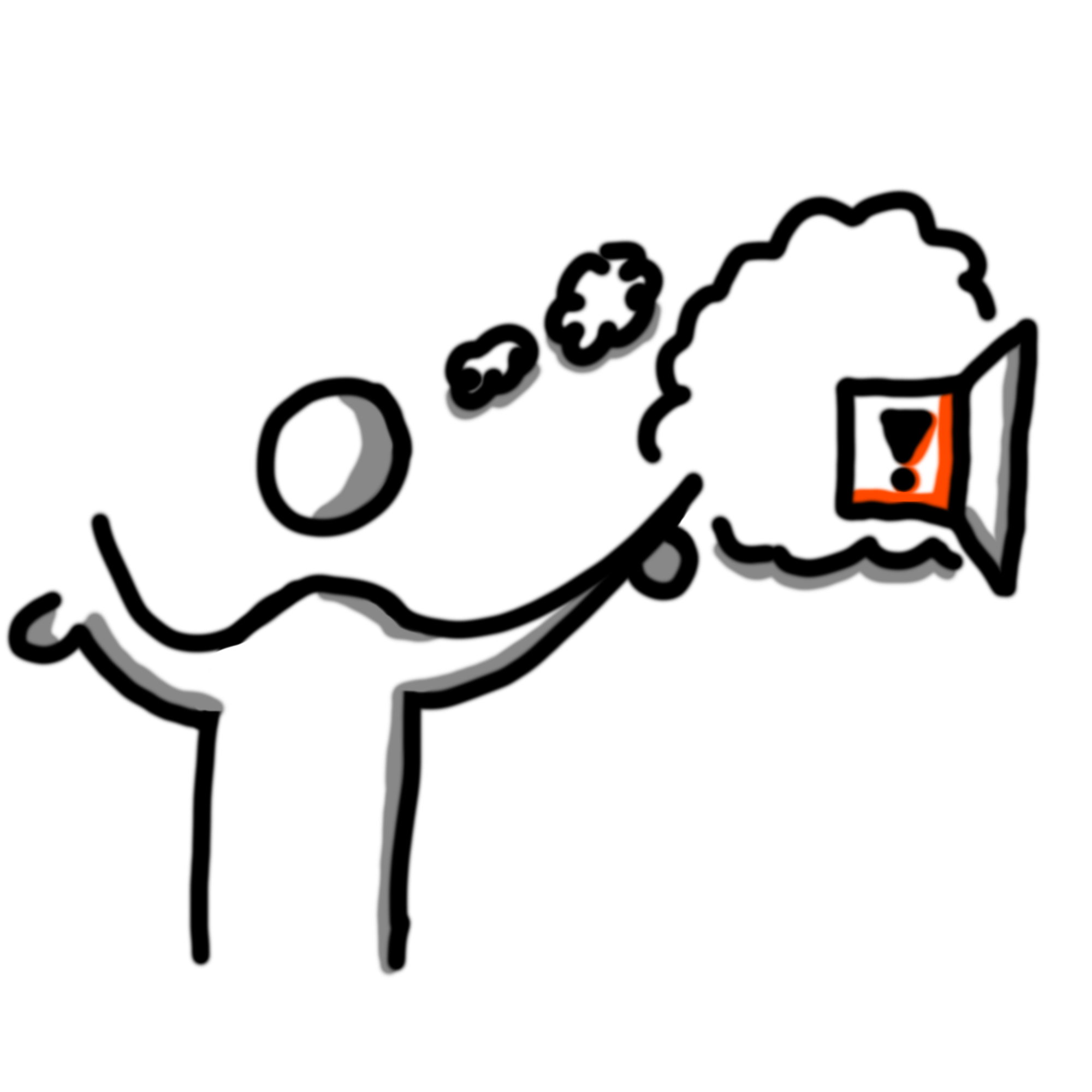
Want to learn about Theory U?
I think the world as a whole can benefit greatly from more people knowing and applying Theory U; luckily, its creator wholeheartedly agrees: Acquiring Theory U skills is free (and acquiring a Theory U certification is very cheap).
For any curious person, Otto Scharmer's Publications are worth the read if you are curious about understanding and influencing group processes through this new lens. There is also Scharmer's free u.lab course that allows for a more engaging learning experience.
Fine Print

This work is licensed under a Creative Commons Attribution 4.0 International License.
In short: You are free to use this for most purposes - including commercial. You must give appropriate credit.